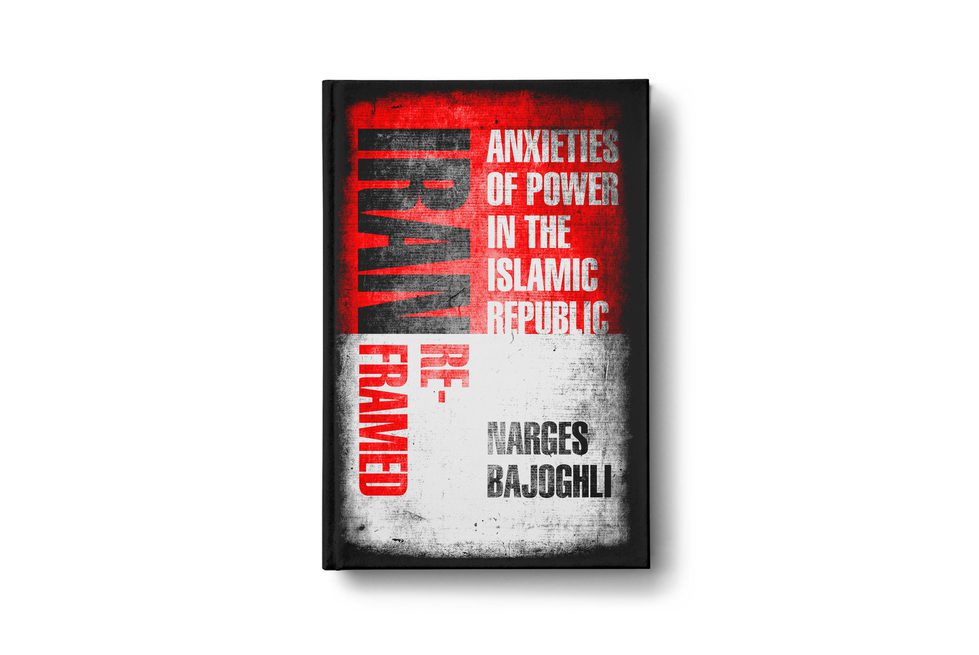Authoritarian Propaganda and Its Discontents
From the Series: Book Forum: Iran Reframed
From the Series: Book Forum: Iran Reframed

When one thinks of authoritarian propaganda, what often comes to mind is an Orwellian media ecosystem created and managed by a centralized state to mold the values, opinions, and behavior of masses in alignment with regime ideology. Yet this top-down model and its success at indoctrinating a coherent ideological narrative seems increasingly untenable and somewhat anachronistic in today’s fragmented, global media environment where national audiences are exposed to a multitude of alternative and oppositional media. Due to this ever-increasing exposure to international and diasporic media, younger generations in authoritarian regimes like Iran have grown apathetic toward the political rhetoric circulated through state-owned/state-sponsored media.
In this concise and brilliant ethnography, Iran Reframed (2019), Narges Bajoghli explores how Iran’s most prominent pro-regime media producers tackle a pressing challenge: how to repackage regime ideology in a way that would appeal to younger generations disillusioned by the Islamic regime and skeptical of its cultural products. Rather than producing content only for state television, easily dismissed as propaganda by the media-savvy youth, these Iranian propagandists attempt to hide their pro-regime discourse by pretending to be underground or independent filmmakers. To circumvent negative reviews that would deter prospective audiences, they change their distribution patterns from large film festivals in Tehran to school screenings and small-town film festivals. To attract those apprehensive about political Islam, they concoct a relatively more inclusive rhetoric: populist nationalism. Other than the last one, Bajoghli suggests that these strategies mostly fail to be effective. Critical audiences can detect clues as to the pro-regime source of these seemingly independent/underground documentary films. Teachers refuse to screen them. Younger audiences who go to small-town festivals easily get bored when the pre-screening reception ends and the film starts.
While reading Bajoghli’s captivating account of these strategies, I couldn’t help but wonder why these pro-regime media producers spend so much of their creative energies on covering their tracks and other furtive tactics rather than creating cutting-edge, savvy media products similar to their international counterparts—potentially more attractive to uninterested younger audiences. For example, Do It Yourself (DIY) and self-help style American reality TV shows are implicit forms of propaganda designed to instill neoliberal ideology by conditioning audiences to function without assistance from the state and encouraging fiscal responsibility, self-enterprise, and self-sufficiency (Ouellette and Hay 2008).
Similarly, pro-Erdogan Islamic TV broadcasters in Turkey air morning talk-shows, self-help and reality shows aimed at empowering the family. Their frequent emphasis on “family values” is not solely about propagating a religiously-inspired conservative morality; the discourses and sensibilities promoted on these Islamic TV shows also articulate with the Erdogan regime’s neoliberal policies seeking to cultivate responsibilized families for the sake of alleviating the government’s “burden” of provisioning social and welfare services to individuals (Kocamaner 2017). I wonder why pro-regime Iranian media producers insist on producing explicitly political genres of propaganda rather than experimenting with these entertaining, implicit, and subtle forms of propaganda.
It could be that they see these entertainment genres as morally corrupting. But I think the answer may also lie in their (implicit) conceptualization of media influences. These media producers seem to have a perspective similar to the “hypodermic needle” model of media influences[1], envisioning audiences as passive consumers who uncritically absorb ideological media messages. Hence, they assume apathetic Iranian youth would accept their ideological rhetoric more readily if only they could hide that these media were not produced/sponsored by the Islamic regime. I wish Bajoghli provided more insights about how the target audience of these pro-regime films (especially those who participated in the Green Movement [2]) respond to them. But it isn’t hard to guess these critical audiences aren’t easily drawn into them.
[1] This model is rooted in behaviorism and the critical media studies of the 1930s led by the Frankfurt school in Germany, but was later challenged by British cultural studies scholars in the 1980s, especially by the contribution of Stuart Hall and his “encoding/decoding model” which gives a significant role to audiences who are free to either accept, reject, or negotiate media messages (2002).
[2] The Iranian “Green Movement” refers to the political movement that emerged after the 2009 presidential election In Iran, which called for the removal of Mahmoud Ahmadinejad from office.
Hall, Stuart. 2007. "Encoding and Decoding in the Television Discourse." In CCCS Selected Working Papers, Volume 2, edited by Ann Gray, Jan Campbell, Mark Erickson, Stuart Hanson, and Helen Wood, 386–398. New York: Routledge.
Kocamaner, Hikmet. 2017. “Strengthening the Family through Television: Islamic Broadcasting, Secularism, and the Politics of Responsibility in Turkey.” Anthropological Quarterly 90, no. 1: 675–714.
Ouellette, Laurie, and James Hay. 2008. Better Living through Reality TV: Television and Post-Welfare Citizenship. Malden, Ma.: Blackwell Publishing.